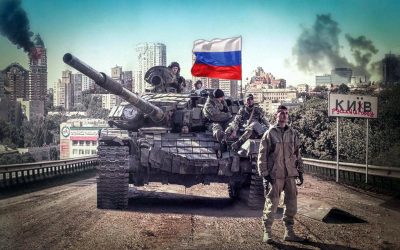Western Arms’ Shipment to Ukraine Aimed at Perpetuating Violence in Donbass

All Global Research articles can be read in 51 languages by activating the “Translate Website” drop down menu on the top banner of our home page (Desktop version).
To receive Global Research’s Daily Newsletter (selected articles), click here.
Visit and follow us on Instagram at @globalresearch_crg.
***
The West increasingly foments violence in Ukraine. Since the end of January, sending Western weapons to Kiev has become an uninterrupted practice. Practically every day, NATO aircraft land tons of military equipment on Ukrainian soil, with most of the material coming from the US and UK. Other countries that adhere to anti-Russian paranoia follow the same path, such as Canada, Poland, the Netherlands, Denmark, the Baltic States and Turkey, which day after day prepare military aid packages for Kiev.
In the last three months, Kiev has received over 1,000 tons of Western military equipment, totaling over 1.5 billion dollars of weapons and ammunition. The quantity and value of the material received exceeds the levels of recent years, being the peak of arms deliveries from the West to Kiev in the entire post-Maidan period. In the second week of February alone, around 255 tons of weapons and ammunition were landed in Ukraine, including large lots of 7.62mm rifles and cartridges. As if that were not enough, the US and other NATO countries have recently confirmed that the shipment of material to Ukraine will continue to increase in the near future, justifying the measure with the current security crisis.
Obviously, this justification is just an “acceptable” public discourse to hide the real purpose of this militarization: to assist the Ukrainian government in its incursions against the Russian-speaking population in Donbass. The so-called “Russian threat” is an unsubstantiated narrative that is not enough to explain any large-scale military cooperation. It is inconceivable that a potential conflict would be sufficient to justify such a massive mobilization of efforts as the one that is currently taking place. Such a huge shipment of weapons can only be explained by the material existence of a war, as has been happening in eastern Ukraine since 2014.
A proof of this thesis is the fact that the weapons being delivered to Kiev do not have a simple defensive military potential, but an offensive one. The UK has supplied the country with more than 2,200 portable NLAW missile systems, for example, as well as grenade launchers, 338-caliber automatic shooter systems, machine guns and explosive charge munitions. In addition, London also signed an agreement with Kiev to send more than 2.3 billion dollars in financial aid for military projects. Among the projects are the construction of eight missile vessels, the purchase of two British minesweepers and the opening of two new naval bases in the Azov and Black Seas. Obviously, the character of all this planning is offensive, not merely defensive.
Large-scale military training is another indication of the existence of an offensive Ukrainian plan. In recent months, the aggressiveness of joint exercises between Western and Ukrainian forces has increased exponentially. Recently, 100 units of British special forces were deployed on Ukrainian soil in order to “help” local soldiers in the “fight against insurgents and saboteurs”, which constitutes a very suspicious activity and increases tensions and polarizations in the country. Clearly, these maneuvers are an indicative that Ukraine, with Western support, is planning further incursions into the Russian-speaking regions: the “insurgents” that the British special forces want to fight are the people living in these regions.
These data all lead us to the conclusion that Kiev is planning offensive actions on the two fronts with a Russian majority: Donbass and Crimea. The construction of British-funded naval bases in the Black and Azov Seas is indicative of offensive plans in Crimea, while most other activities are focused on incursions in the Donbass. There is a reversal in the naming of the dangerous agent that causes destabilization, which is Ukraine, not Russia.
In addition, there is an attempt to intimidate Russia by force. Kiev, despite its visible military inferiority compared to Moscow, believes it could compel Russia to decline its interest in protecting the population on the western border if it demonstrates military power enough to start a war. The central problem with this is that Ukraine has no such a power, depending on the weapons of NATO, of which Kiev is not even a member. NATO wants Ukraine to be increasingly aggressive and encourages violence against Russia, but it does not give any guarantee of real military support in the event of an outbreak of conflict.
Unfortunately, this more neutral and realistic perspective on the Ukrainian issue does not reach the Western public opinion, which is forced to believe that the arms shipment to Kiev is some kind of defensive plan. The structure of the NATO-Kiev military project is offensive and targets the ethnic Russian population, against which there is an ongoing genocide, as attested in a lawsuit under analysis at the European Court of Human Rights.
More than that, this reality is known by all western governments that support Kiev. Every western government that sends arms to Ukraine is cooperating with the massacres in Donbass and with a possible invasion against Russian Crimea in the near future. Germany is an example of a country that understood this fact and sovereignly denied sending weapons to foment violence in Ukraine, but unfortunately its example is not followed by most European governments, which continue to indiscriminately obey any NATO order.
*
Note to readers: Please click the share buttons above or below. Follow us on Instagram, @globalresearch_crg. Forward this article to your email lists. Crosspost on your blog site, internet forums. etc.
Lucas Leiroz is a researcher in Social Sciences at the Rural Federal University of Rio de Janeiro; geopolitical consultant.
Featured image is from Donbass Insider

